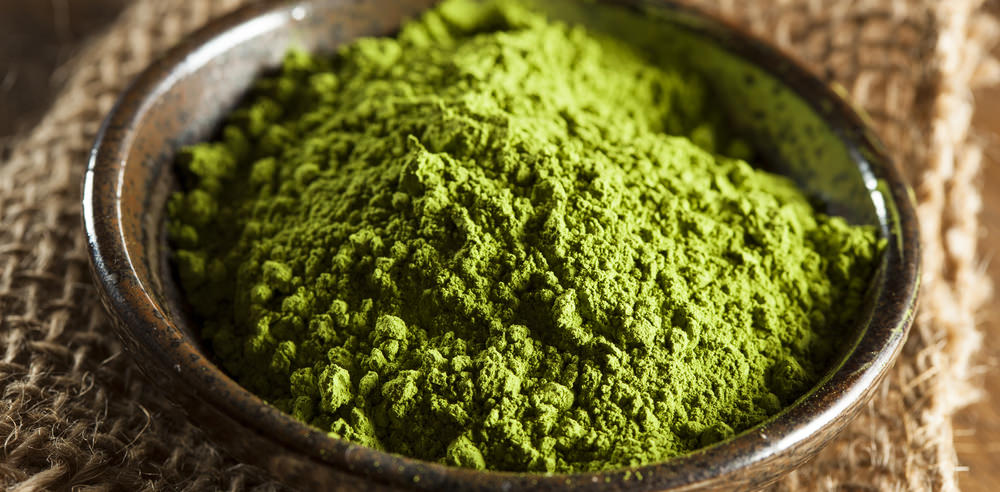
You can buy green tea leaves in a variety of shapes and colors, which makes the number of choices way too overwhelming. So let me try to clear things up for you.
All green tea comes from the camellia sinensis plant. It’s a vibrant green bush that grows best in high, moist areas. The low mountain ranges in Japan and China are perfect for this.
From this magical plant we get a variety of teas.
 Green Tea Plants in Shizuoka, Japan
Green Tea Plants in Shizuoka, Japan
No matter who you ask, this answer will always be a matter of opinion. The best answer I can give you is that it all depends on what you like and what kind of flavor you are looking for.
What I can tell you is the process that these tea leaves go through before they end up in your hand.
Matcha – is grown in the shade. So the leaves end up being a bright green color, just like the drink. The leaves are ground into a fine, brilliant green powder. It is often said to be an acquired taste because it has a rich, sweet flavor.
Gyokuro – is grown similar to matcha, however it’s not ground into a powder. It’s usually more expensive and is thought to have a sweeter flavor than sencha.
Sencha – is the most popular and most common green tea in Japan. The new buds are steamed and rolled as they are dried giving them a thin and cylindrical shape. The taste is light and slightly bitter with a refreshing aroma.
Genmaicha – is a mixture of green tea leaves and roasted brown rice. This tea has a much more mild flavor and it’s aroma comes primarily from the brown rice. The color tends to be more yellow than green.
Kukicha – is made from the scraps left over from the powdered matcha. It is pretty much all stems and leaf veins. It’s still really good though, with a mild nutty flavor. It’s not nearly as bitter as matcha and sencha.
White Tea – is from the same plant as all the different teas on this page. It is made by letting the buds and leaves dry out in the sun before processing. This causes the buds and leaves to lose their color and go white. Once brewed, they make a pale yellow drink.
Oolong tea – is made from the same leaves. What makes them different is that they are dried and fermented until they are fifty percent oxidized. This makes it a very dark tea and it can have a variety of flavors depending on the amount of processing and brewing.
The way the tea is grown, picked and processed all have an affect on the flavor of the drink. Another major factor is the way that you brew the green tea leaves. It makes a huge difference in the taste.

Simple solutions to help you enjoy the benefits of green tea while minimizing the caffeine side effects. Find out how to make your own decaf green tea.

Learn about the benefits, caffeine, and brewing methods of Longjing tea, and identify characteristics of high and low quality teas by examining the color, taste, and smell.

Genmaicha is a mixture of green tea leaves and roasted brown rice. Giving you a mild flavored drink with a robust aroma. Learn more here.

Find out why many tea drinkers say Gyokuro is the best green tea available. Learn more here.

Not sure how to make green tea? Depending on the type of tea and the tools you have, there are several options. Brew it in your glass, in a tea pot, or on the stove.

Kukicha is a special green tea because it doesn't contain any green tea leaves and it's naturally low in caffeine. Learn more.

Matcha tea is a green tea powder that has 3 times more antioxidants than regular green tea. Learn how to make Matcha and discover all of its benefits.

Answer all your questions about Oolong tea. Find out the health benefits, how it aids in weight loss, how it’s made, and how it tastes.

Are you trying to decide whether to buy organic or non-organic matcha? Find out why I drink non-organic matcha, but also when you really should buy organic.

Sencha is the most popular green tea in Japan. Choose Sencha green tea when you are looking for a good quality, delicious tea for a reasonable price.

Shincha is a rare type of green tea that is only available once a year in the spring. Learn about its qualities, brewing and storage.

Most Matcha green tea sellers have a big secret they don't want you to know. In this article we expose the truth about the antioxidants in Matcha.